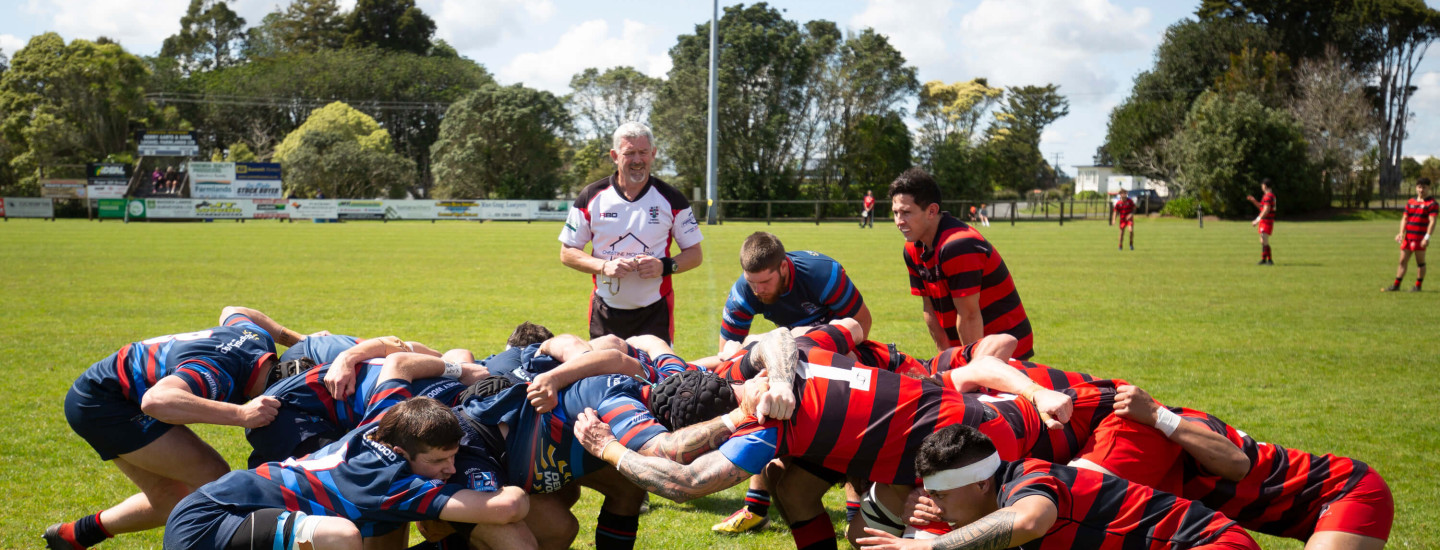Ways to prevent injuries
The key to a rewarding rugby experience lies in smart preparation. By focusing on physical fitness, proper injury management, and mastering correct techniques, you'll not only reduce risks but also enhance your performance and enjoyment on the field.
Five tips to prevent injuries

There are a bunch of ways you can reduce your risk of getting hurt on the field:
- Warming up before any activity, whether it's before training or a game. This is proven to reduce the risk of injury.
- Take the time to learn the correct technique. This is especially important when tackling.
- If you do get injured, don't rush back into action; you could re-injure yourself. Take your time to get better first
- Prioritise rest and recovery time. That doesn't have to mean staying on the couch. You can do a lower intensity activity like walking or yoga as a great option too.
Safe rugby practices
-
Warm up
Players will become fitter, faster and stronger when they do warm ups. And most importantly, they will prevent most unneccesary injuries.
A good warm-up
- involves moving those muscles that you will use in the game or training.
- is fun and can involve a ball.
- is most important at the beginning of the season when most soft-tissue injuries occur (often due to not warming up)
- gradually increases to contact training.
-
Tackle technique
Learning how to tackle correctly is one of the most valuable skills to have if you're playing contact rugby.
Depending on the size, stage and age of the player; training should focus on one of the below until players are confident and competent to execute and compete at the level they are playing.
On Rugby Toolbox there are skills and drills to(external link):
- Develop tackle confidence – gain trust around getting in position to tackle.
-
Develop tackle competence – execute of proper tackle techniques.
-
Develop tackle skill execution – quality of correct actions determined by the demand of the situation.
-
Develop tackle skill with competition – the ability to maintain quality skill under a fatigued state.
-
Recover
Recovering from injury can be frustrating both physically and mentally but it is important that we allow ourselves the proper time to recover, to prevent re-injury.
For any concussion, the minimum stand-down period before a player can return to contact training is 21 days.
GRADUATED RETURN TO PLAY
During this stand down period players must complete the Graduated Return to Learn/Work and the Return to Play (GRTP) program. These programs are based on international best practice with the goal of helping players recover and get back to school/work and sport.
An athlete should not go back to sports until they are back to school or work without symptoms getting significantly worse and no longer needing any changes in their schedule.

GRADUATED RETURN TO LEARN
As a concussion is a brain injury the ability of the player to think and process information will also be affected. The athlete may need to miss a few days of school or work after a concussion. When going back to school or work, some athletes may need to:
- Go back gradually
- Make changes to their schedule so that concussion symptoms do not get worse.
If a particular activity makes symptoms worse, the athlete should stop that activity and rest until symptoms get better.
If the player continues to have symptoms with mental activity, some other things that can help with return to school or work may include:
- Starting school/work day late, only going for half days, or going to a certain class or doing certain tasks
- Taking lots of breaks during the day
- Allowing more time to finish tasks, assignments or tests
- No more than one exam per day
- Working in a quiet room
- Avoiding noisy areas at school or the workplace
- Use of a student helper/tutor
If at any stage the symptom comes back, players need to return to the previous stage until they are gone. These timeframes are a minimum, sometimes players may need to spend longer in each stage.
Although most players recover within the above timeframes if at 21 days you are still having concussion symptoms we encourage you to seek further medical treatment.
-
Balance is better
To help kids and teens enjoy sport and stay healthy; encourage fun, variety and free play.
- Encourage variety – have them try out different sports and playing positions during their school years.
- Do the numbers – the number of hours per week of structured sports training and competition should be less than their age, eg less than 10 hours per week for a 10-year-old.
- Avoid playing a single sport for more than 8 months per year.
- Play for enjoyment – are they smiling? Focus on developing a love of sport and being active.
- Free play – this provides bigger opportunities to develop a variety of skills by just playing with their mates, which can also help them in their sport.
Allow time for rest, recovery and sleep – sometimes doing nothing is doing something.
-
RugbySmart and Small Blacks
RugbySmart is a compulsory injury prevention course for all rugby referees and coaches of grades over Under 13 level at the beginning of every rugby season. Coaches of players aged 12 and under attend a compulsory Small Blacks Coaching Course, which includes RugbySmart.
RugbySmart is a world-leading programme and since its launch we’ve seen significant drops in rugby-related injury claims.
It’s a comprehensive approach that is about keeping players where coaches and supporters want them: on the field, contributing to a fun season.
